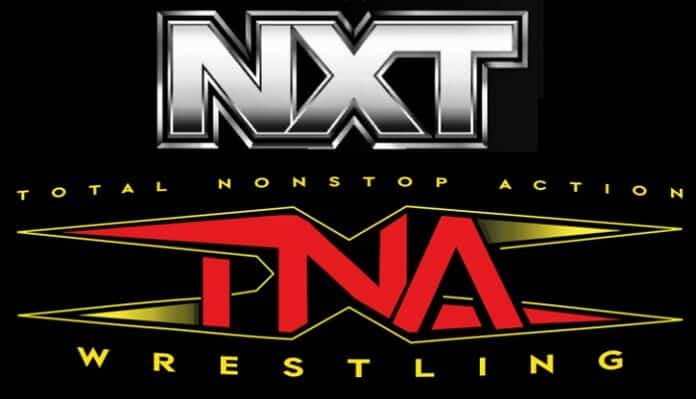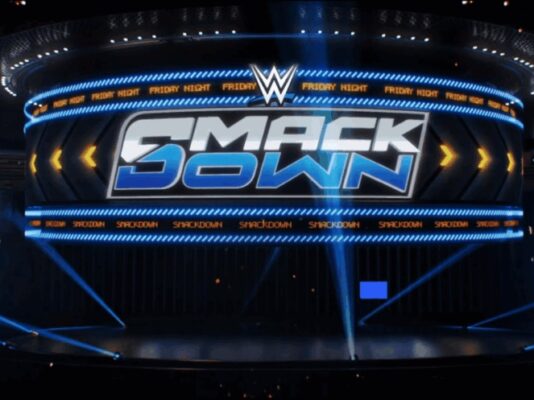
It was probably only a matter of time.
A few years ago when WWE brought TNA into the fold with a working agreement, it had a domino effect on the industry on a few different layers. Any of those particular aspects on their own aren’t earth-shattering, but the sum total of the partnership continues to incrementally increase TKO’s stranglehold on the business, a key aspect as the publicly-traded corporation looks to globalize its reach even more with more premium live events in foreign markets next year.
Let’s be honest here, the originally plan for satellite territories around the world, which was started with the NXT UK project before the pandemic shuttered the entire world and thus ended that venture, was too ambitious even for the WWE. It’s still too ambitious for the multi-billion dollar TKO conglomerate, as it’s simply not feasible to use a copy and paste approach from the WWE playbook for different countries since that ignores cultural and traditional cornerstones of those parts of the world. Sure, the WWE could try to open WWE Brazil with a venue and broadcast shows from Rio De Janeiro, the claimed location of the phantom tournament that crowned Pat Patterson the first intercontinental champion, but would that be a truly viable approach to global expansion?
Clearly, it wasn’t and instead of trying to paint with a broad brush, the WWE has either taken their own expansion into new markets, with European pay-per-views being more commonplace on the calendar, they understand that the style and tradition is unquie to certain places so that aren’t going to try to go against the grain in places like Japan, where they instead have an upcoming super show. It’s better to run a very successful annual tour than it would be for a full-time expansion to eventually fail. For Mexico, they didn’t try to specifically implement a WWE promotion there, but rather bought a foothold in the country with the purchase of AAA with the notion that they can monetize an existing commodity to a greater degree. Again, there’s no reason to go against the grain, the bottom line is profitability.
So, instead of a series of developmental leagues around the world, TKO has focused on a few key moves that expand their reach on a worldwide basis, which is probably the much more realistic decision.
That being said, they also looked to expand in the domestic market as well, not just in terms of live events, which we’ve seen with cities that bid to host signature pay-per-views, but also with the addition of TNA under the umbrella.
While AAA is TKO’s foothold in Mexico, the working agreement with TNA continues to prove to be a way to expand on a secondary level within the United States.
It might sound trivial, but one of the most important pieces of the puzzle of this partnership, originally intended or not, is that it gives the massive corporation plausible deniability from an accusations of a monopoly or manipulative business practices. Last year, Major League Wrestling won a $20 million anti-trust lawsuit against the WWE, a rare defeat for the sports entertainment empire in court. Now, MLW is small potatoes in the grand scheme of things, and $20 million in a drop in the bucket when TKO contracts are usually in the billions, but the bottom line is that the publicly-traded corporation doesn’t want the negative publicity, especially since it could affect the stock price. Going forward, it’s going to be tough for anyone to make a similar case against the WWE when the company showcases and promotes a legitimately independently-owned different pro wrestling organization.
Specific to the wrestling side of things, the TNA agreement basically shuts off another pipeline of talent for AEW, as it’s more or less reasonably confirmed that if the WWE wants to add a TNA wrestler to its roster, it’s a done deal. For example, Joe Hendry is rumored to be close to his full-time WWE debut relatively soon. As more TNA names continue to develop and increase their value with the increased exposure on NXT television, it’s momentum that All Elite might not be able to capitalize on with a contract offer. Of course, a TNA talent could decline a WWE contract and opt to sign with AEW, but we’ve seen how these types of situations have worked in the past. When the WWE wanted Tazz and The Dudleys, those wrestlers left ECW in 1999. Before Rob Van Dam or Tommy Dreamer made their debuts on WWF television, they were told that they would eventually get a contract offer in 2001.
Right now, the point might be moot because of how bloated the AEW roster is, but it could be a different scenario, depending on how TNA talent develops over the next few years.
However, the biggest takeaway from the continued partnership between WWE and TNA, which will increase significantly during the current “invasion” angle, a throwback to the previously mentioned 2001 era, is that an increase in the footprint of Total Nonstop Action can directly or indirectly take a piece of the pie take from All Elite. I’d guess that next week’s “invasion” episode of NXT television is just the start, not the conclusion, of something that will bring more collaboration between the two sides.
Despite Impact being on solid ground in Canada because of its Anthem ownership and it’s strong ratings in the country, which is what ultimately led to Anthem’s purchase of the company in 2016, because of its strong numbers on the Fight Network, the show still has relatively low television clearance on AXS in America. Last month, TNA president, Carlos Silva made a few headlines when he said that the organization was looking for a new media rights deal that could bring live weekly programming to a network in the United States.
The increased distribution of the product is a key piece of the puzzle for the overall growth of the organization, and it certainly would be easier to get a new TV deal off the ground if the NXT audience, which usually draws better numbers than Dynamite on most weeks, would following the action of Impact after they saw more TNA talent and crossover angles on the CW network.
It was probably only a matter of time until the TNA expansion potentially impeded the business strategies of AEW, as the more exposure that Total Nonstop action gets, the more it can chip away at AEW’s market share, or at the very least, prevent AEW growth in some form or fashion. Make no mistake about it, this was undoubtedly one of the goals of the partnership when WWE agreed to bring TNA on board. If TNA is seen more often on the CW network, that increases the brand’s chances of landing a better television deal. More exposure, regardless of the platform opens the door for more live event touring, more of a selling point for pay-per-views, and increased competition for TV viewers. Maybe there will be a time when fans will have to decide if they want to purchase a ticket to Dynamite or admission to a TNA TV tapings, and at least initially, TNA could have the advantage of the novelty with the renewed spotlight on the company. Maybe instead of the $50 All Elite pay-per-view, fans decide to sample the $40 TNA PPV to see what the recent hype is about around the organization?
Of course, this isn’t to say that All Elite Wrestling is in any danger, as money is no object and the Khan family can fund the project as long as Tony Khan wants to play promoter, but it definitely puts the dynamics of the industry in perspective as far as the entire landscape of the business when WWE’s developmental brand of NXT and potentially the smaller organization of TNA will probably draw better ratings for the Invasion show when it goes head-to-head with the Title Tuesday edition of Dynamite next week.
What do you think? Share your thoughts, opinions, feedback, and anything else that was raised on Twitter @PWMania and Facebook.com/PWMania.
Until next week
-Jim LaMotta
Email [email protected] | You can follow me on Instagram, Facebook, & Threads @jimlamotta89












